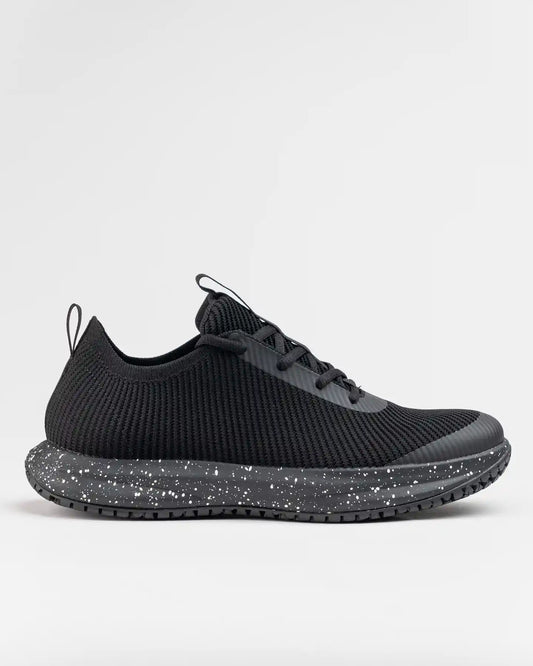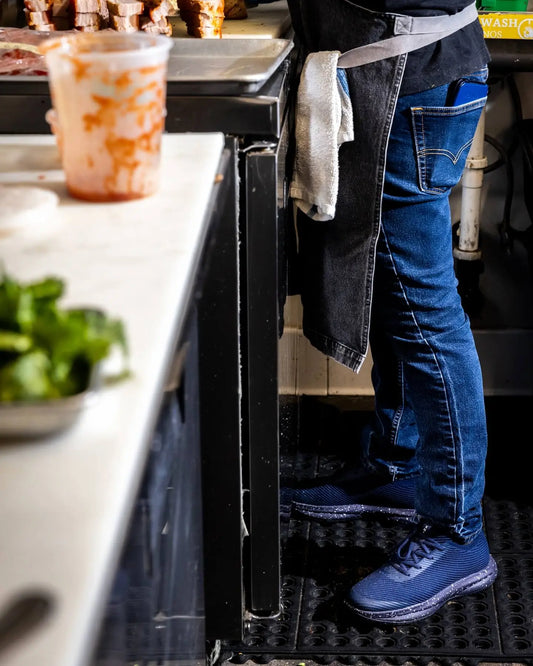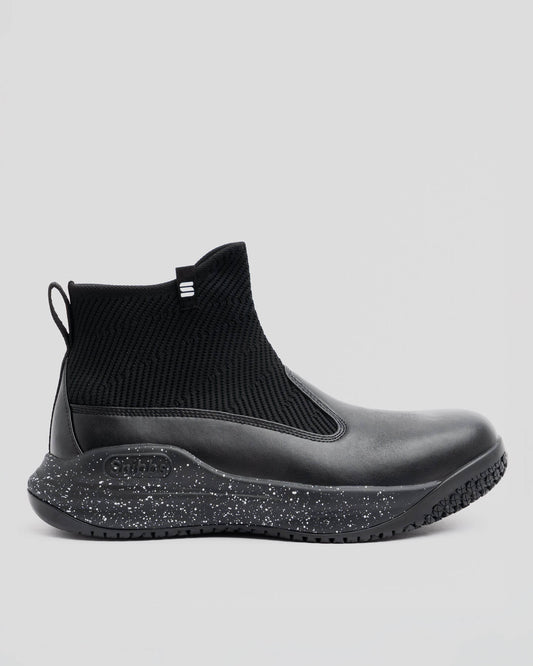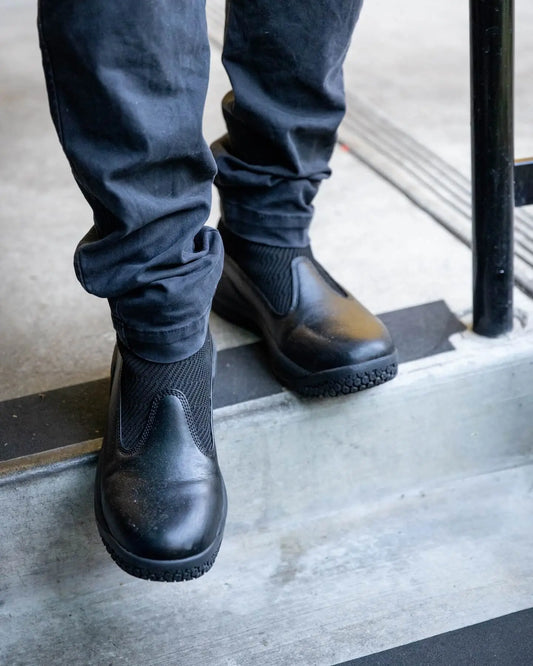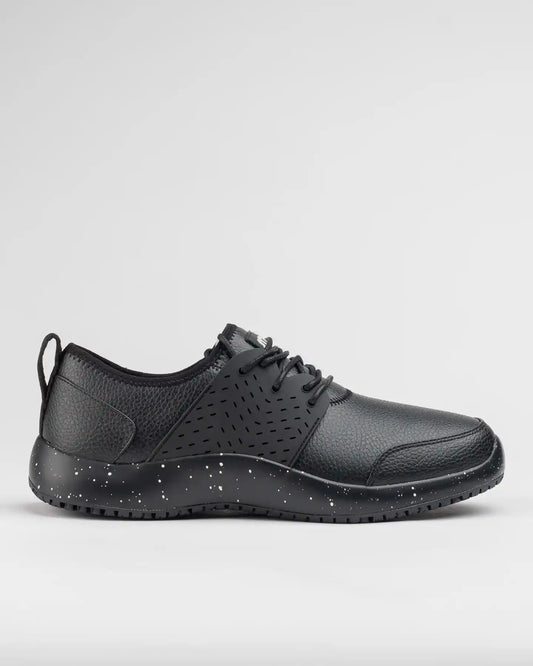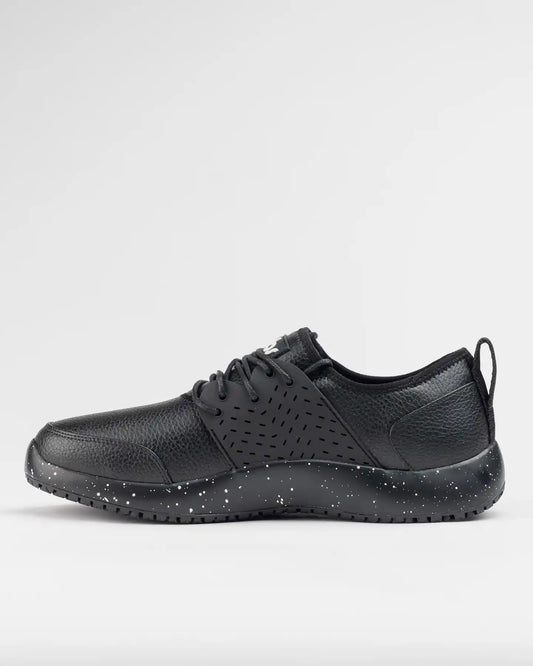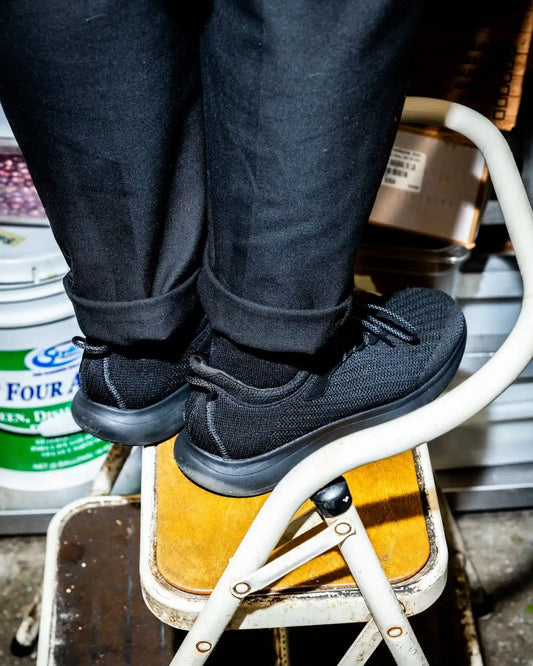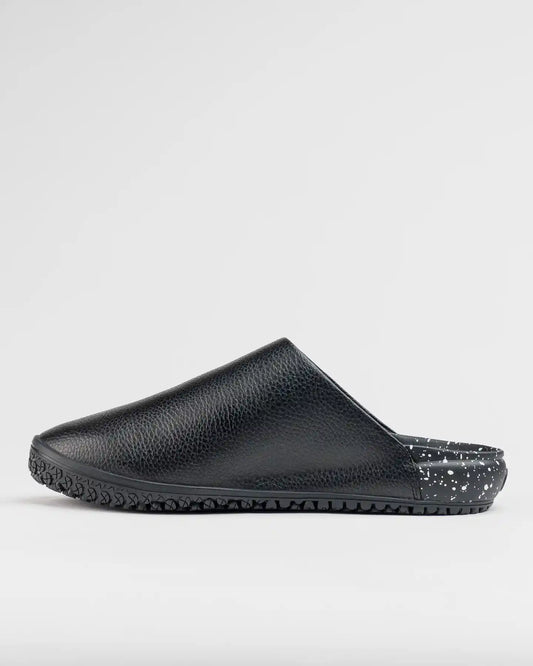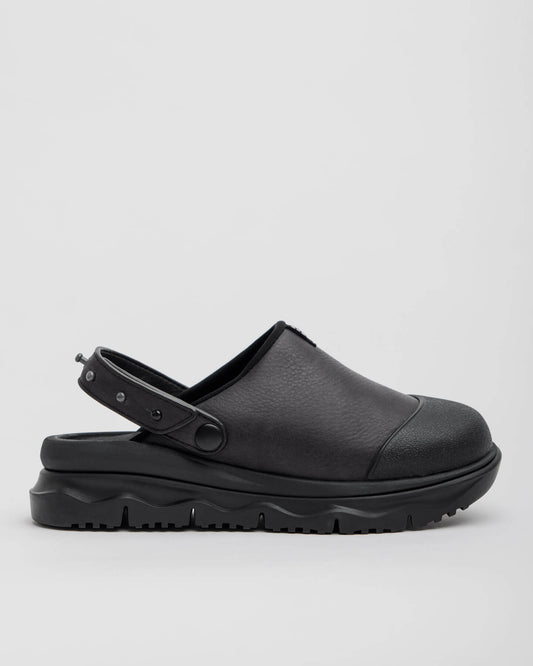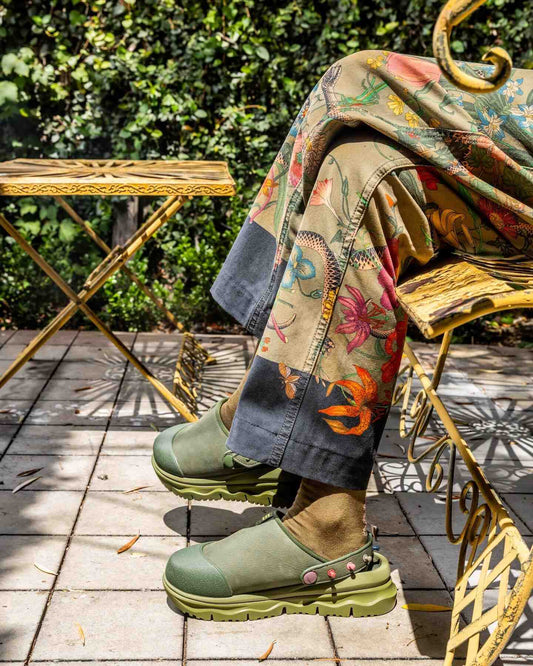5 Benefits of Compression Socks For Nurses
Alex Kinejara
If you’ve ever come home after a long shift with aching legs, swollen ankles, and sore feet, you know the irony of how tolling nursing can be on your body. Yes, it’s satisfying to know you’re doing brave work—but there must be a way to prevent discomfort while caring for your patients as a nurse. Right?
Absolutely. Compression socks are a simple, effective tool many essential workers rely on to take the pressure off (literally) lengthy days spent at hospitals, clinics, and other healthcare settings.
Here, we’ll detail 5 reasons why nurses wear compression socks and why they’re the best pairing for your scrubs since your favorite work shoes for nurses.
#1 They Assist with Circulation
Compression socks were designed to improve circulation in the legs and trunk, thereby improving the health of your veins, lymphatic system, and circulation.1 For essential workers, this is particularly important—and not just because support socks can offer an extra dose of support on a chaotic 12-hour shift as a nurse.
Achieving improved blood circulation can benefit your life in the long run by promoting:
- Heart health – Compression socks keep blood in your legs from stagnating, making it easier for blood to circulate between your trunk and your heart. Promoting more balanced blood circulation can help aid heart health in the long run.2
- Cellular health – Every cell in your body relies on blood flow to acquire the oxygen and nutrients they depend on to stay in tip-top shape. When you promote better circulation, every organ from your brain to your skin benefits—which means you could notice clearer focus, sharper memory recall, and even a little extra glow to your complexion.
- Better thermoregulation – Proper blood flow is essential for ensuring your body can adjust its inner thermostat. And with better temperature regulation, you may not need that hidden stash of cardigans to help you stay comfortable on the job!
#2 They Take The Pressure Off
Compression socks are built to redistribute pressure throughout your leg, thereby alleviating a sense of heaviness or muscle fatigue.
If you’re prone to feeling constant aches in your legs—whether on the job or after you’ve returned home—compression socks can be a simple way to put the spring back in your step and vastly improve your sense of well-being on and off the job.
#3 They Combat Swelling
After a long shift, nurses often come home to find their legs and feet aren’t just sore but swollen. Medical compression socks actively work against swollen ankles and legs in two ways:3
- Preventing buildup – Lymphatic vessels and blood vessels can leak when they’re put under stress. This fluid leakage can build up around our tissues, causing swelling and inflammation. By wearing compression socks, you can discourage this inflammation before it occurs.
- Working against gravity – Any professional who spends long hours on their feet can experience swelling. This is because gravity causes blood and fluid to descend—and, often, stagnate—in the body’s lower half. By applying more pressure to the ankles and less to the calves, support socks work to defy gravity and redirect blood up to the heart.
See related: How to Wear Scrubs
#4 They Reduce the Likelihood of Varicose Veins
When your veins have difficulty carrying blood out of the legs and back to the heart, that excess blood can pool in your lower legs. This can result in varicose veins, a medical condition in which veins appear larger, contorted, and typically a dark shade of blue or purple.
Various factors can make you more susceptible to developing varicose veins, including:4
- Sitting or standing for prolonged periods of time
- A sedentary lifestyle
- Being overweight
- Menopause
- A genetic predisposition for varicose veins5
Compression socks help to combat varicose veins by preventing blood from pooling, making them a must-have if you’re worried about developing them. They also help with venous insufficiency.
#5 They Support an Energized Work Day
For nurses, one of the main benefits of compression socks is their ability to make you feel more ready and able to take on the day without pain. Not only do compression socks keep your legs feeling energized, but by improving circulatory health your whole body can reap the rewards as well.
Flashback to nursing school: your body, miraculously, contains tens of thousands of miles of blood vessels. By slipping on a pair of medical compression socks to take care of them, you may even feel vigorous enough to walk all 60,000 of them in your most stylish pair of working shoes.6
Take the Pressure Off in Style with Snibbs
Every care professional knows it’s all too easy to forget about personal comfort when you’re devoting most of your time to patients. But true self-care doesn’t revolve around DIY face masks or bathtub soaks—instead, it’s about keeping supportive staples at hand so you can do your work as a medical professional.
Snibbs’ compression socks and footwear provide the comfort, durability, and sleek look you need to get the job done without pain and leg fatigue. We’re passionate about providing workers with shoes that will make their jobs easier, whether you’re saving lives or helping patients recover post-op. Plus, with eco-friendly designs that prioritize orthopedic-level comfort, style, and the planet, you can feel confident that you’re saving the world in more ways than one.
Sources:
- Cleveland Clinic. What You Should Know About Compression Socks. https://health.clevelandclinic.org/what-you-should-know-about-compression-socks/
- Harvard Health Publishing. Boosting circulation with compression stockings. https://www.health.harvard.edu/staying-healthy/boosting-circulation-with-compression-stockings
- Partsch, Hugo, Johann Winiger, and Bertrand Lun. "Compression stockings reduce occupational leg swelling." Dermatologic surgery 30.5 (2004): 737-743. https://onlinelibrary.wiley.com/doi/abs/10.1111/j.1524-4725.2004.30204.x
- Antani MR, Dattilo JB. Varicose Veins. [Updated 2022 Jul 13]. In: StatPearls [Internet]. Treasure Island (FL): StatPearls Publishing; 2022 Jan-. Available from: https://www.ncbi.nlm.nih.gov/books/NBK470194/
- Mayo Clinic. Varicose veins. https://www.mayoclinic.org/diseases-conditions/varicose-veins/symptoms-causes/syc-20350643
- WebMD. How to Improve Your Circulation. https://www.webmd.com/dvt/ss/slideshow-dvt-improve-circulation

